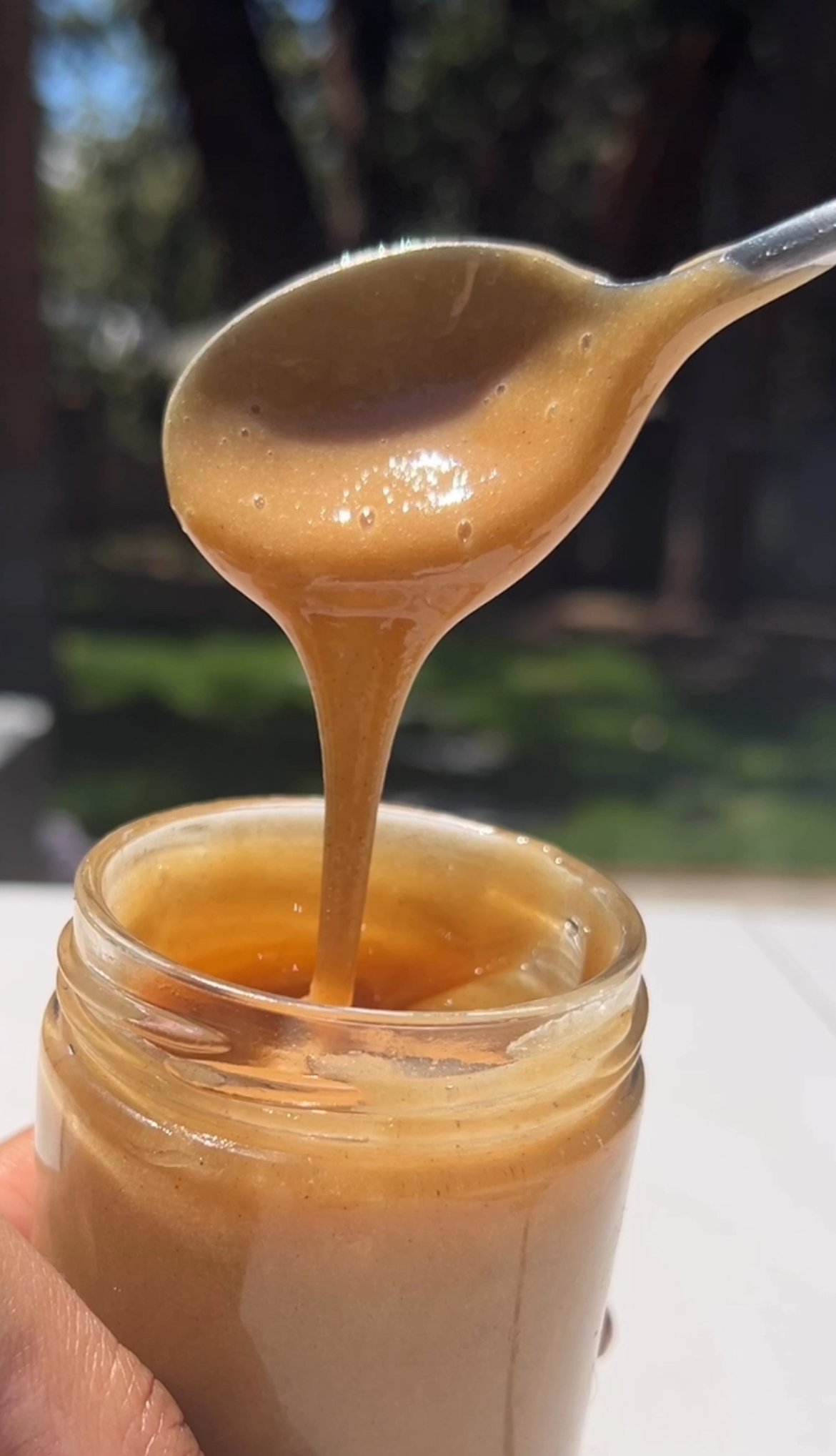Nutritional Herbalism and Nutritives
What is a Nutritive Herb?
A nutritive herb is essentially a plant that contains high levels of essential nutrients like vitamins, minerals, antioxidants, and phytochemicals.
These herbs are valued for their medicinal effects, but also for their ability to nourish the body deeply, providing building blocks for cellular function and overall health.
While many herbs can act as remedies to address specific problems, nutritive herbs are often milder and slower-acting.
Their purpose isn’t necessarily to fix an immediate problem, but to fortify the body's tissues, replenish deficiencies, and provide ongoing support for the body. Nutritive herbs are packed with nutrients like:
Vitamins: Essential for immune support, skin health, and energy production.
Minerals: Calcium, magnesium, iron, potassium, and silica, among others, support strong bones, muscle function, and a healthy nervous system.
Antioxidants: Help neutralize free radicals that cause cellular damage, and help us live longer.
Phytochemicals: Plant-based compounds that can support lots of different body and organ systems.
Nutritive herbs can be consumed regularly as food, tea, infusions, or supplements, making them gentle, but effective in keepign us healthy and preventing illness.
Nutritional Herbalism: A Focus on Vitality, Prevention, and Balance
Nutritional herbalism is a branch of herbal medicine that works uses mineral and vitamin rich herbs to support long-term health, prevent disease, and balance all the systems of the body.
Instead of waiting for the symptoms of an illness and imbalances to appear, nutritional herbalism works by adding nutritive herbs into your daily diet to make sure the body has all the essential nutrients it needs.
With this kind of holistic health approach, there is a focus on treating the person as a whole—mind, body, and spirit—instead of isolating and treating symptoms.
That also means using herbs according to what your specific needs are.
Key principles of nutritional herbalism include:
Building Vitality: Nutrient-rich herbs provide the body with minerals and vitamins you may be lacking due to diet, genetic predispositions, or lifestyle choices so we can improve overall energy levels, tissue repair, and immunity.
Preventing Disease: By regularly nourishing the body, nutritive herbs help prevent deficiencies that could lead to chronic conditions, like bone loss or anemia.
Balancing Bodily Systems: Nutritive herbs promote homeostasis in the body by gently supporting the digestive system, immune system, and nervous system. This makes the body more resilient and adaptable to stressors.
The History and Use of Nutritive Herbalism
One of the wonderful things about nutritive herbs is that they can be used both in the kitchen and as part of a medicinal regimen, blurring the line between food and medicine.
For centuries, herbs were consumed as part of daily meals to nourish and heal the body, much like vegetables and fruits are used today.
In fact, for most of human history, food and medicine were inseparable. Nutritinal herbalism helps us get closer to this truth.
Indigenous Traditions
In many Indigenous cultures, herbs are not just medicines but integral parts of daily life and spiritual practice.
The emphasis is on nourishment, with plants treated as sacred gifts from the Earth.
Indigenous knowledge involves the whole plant, used in teas, broths, or as ingredients in food. Famous indigenous herbalists, such as the late Beatrice Medicine, a Lakota anthropologist and healer, helped to preserve and keep these traditions.
Traditional Chinese Medicine and Ayurveda
In Traditional Chinese Medicine and Ayurveda (India’s ancient healing system), herbs are considered fundamental to food therapy.
These traditions use tonics and superfoods to support bodily functions, enhance vitality, and treat imbalances.
Herbalists like Li Shizhen, the Chinese herbalist who compiled the "Bencao Gangmu" (Compendium of Materia Medica), documented over 1,800 herbs and their uses.
Ayurveda’s foundational texts, compiled by Charaka and Sushruta, also highlight nutritive herbs like ashwagandha for physical and mental resilience.
In Ayurveda, herbs that provide nourishment to the tissues are considered rasayana—or rejuvenating.
Ayurveda also emphasizes the use of herbs in food, as part of daily life, to support digestion (agni) and build Ojas (vital energy).
European Herbalism
In medieval Europe, herbs were grown in monastic gardens and used to nourish the body while also healing all sorts of diseases.
European herbalists like Hildegard of Bingen taught the importance of balance and moderation, using food as medicine in a way that is still applicable today.
Nicholas Culpeper, another well-known European herbalist, helped to educate and popularize the use of common plants like rose hips as vitamin-rich remedies.
Our Favorite Nutritive Herbs
Nettle (Urtica dioica)
Nettle has been used in Indigenous and European traditions, rich in iron, calcium, and vitamins A and C. Great in teas, soups, and stews for mineral nourishment.
Goji Berry (Lycium barbarum)
Goji is a tonic herb, loaded with antioxidants, vitamins C and A, and known for supporting liver function and vitality. They can be added to teas, soups, or trail mixes.
Dandelion (Taraxacum officinale)
Common in Indigenous and European herbalism, the leaves and roots of Dandelion are rich in potassium and support liver and digestive health. Dandelion greens can also be used in salads or sautéed.
Astragalus (Astragalus membranaceus)
A staple in TCM, it is known for boosting the immune system and fortifying energy. Often used in broths or soups, it can be simmered with other ingredients.
Oatstraw (Avena sativa)
A nutrient-dense herb rich in calcium and magnesium, Oatstraw supports nervous system health. It can be infused into teas or added to soups for a calming, mineral-rich drink.
Alfalfa (Medicago sativa)
Rich in vitamins A, C, E, and K, along with minerals like calcium, potassium, iron, and magnesium, Alfalfa is commonly used in herbal teas and as a powdered supplement. It helps detoxify the body, supports the immune system, and strengthens bones. Its high chlorophyll content also aids in alkalizing the body. Alfalfa sprouts can be added to salads, sandwiches, and smoothies.
Horsetail (Equisetum arvense)
High in silica, which is essential for healthy skin, hair, nails, and bones. It also contains calcium, potassium, and manganese. Horsetail is commonly used to strengthen connective tissues and support bone health. It’s often consumed in teas or as a powder added to foods. Though typically used as a tea, the powdered form can be incorporated into smoothies or sprinkled into soups and stews for its mineral benefits.
Red Raspberry Leaf (Rubus idaeus)
Containing vitamins A, C, E, and B, along with magnesium, potassium, calcium, and iron, Red raspberry leaf is supportive to women’s reproductive health, supporting uterine tone and hormonal balance. It’s also an excellent herb for overall nutrition, helping to build and nourish the blood. Often consumed as a tea, red raspberry leaf can be added to herbal blends or used in infusions for mineral-rich drinks.
Chickweed (Stellaria media)
High in vitamins C, A, and B-complex, along with calcium, magnesium, potassium, and iron, Chickweed is known for its cooling, anti-inflammatory properties and is great for soothing the skin, promoting digestion, and reducing inflammation. It also supports weight loss and detoxification. Fresh chickweed can be added to salads, soups, or blended into pestos for a nutrient boost.
Moringa (Moringa oleifera)
One of the most nutrient-dense herbs, it contains a significant amount of vitamins A, C, B-complex, and minerals like calcium, potassium, and iron. It's also high in protein and antioxidants. Moringa supports overall health, boosts energy, enhances immunity, and helps with inflammation. It’s considered a superfood due to its high nutrient content. Moringa powder can be added to smoothies, soups, or juices, or used in cooking as a nutrient-rich green. Moringa leaves can be used in salads or cooked like spinach.
How to Apply This Wisdom in Your Kitchen
Herbal Broths and Soups: Simmer nutritive herbs in broths to infuse the meal with vitamins and minerals.
Herbal Teas and Infusions: Use herbs as part of daily nourishing infusions for mineral support and hydration.
Salads and Smoothies: Incorporate fresh herbs into salads or smoothies for a nutrient-dense boost.
Herbal Powders: Dry and powder herbs and sprinkle them over dishes or blend into dressings and sauces to add nutrition.










